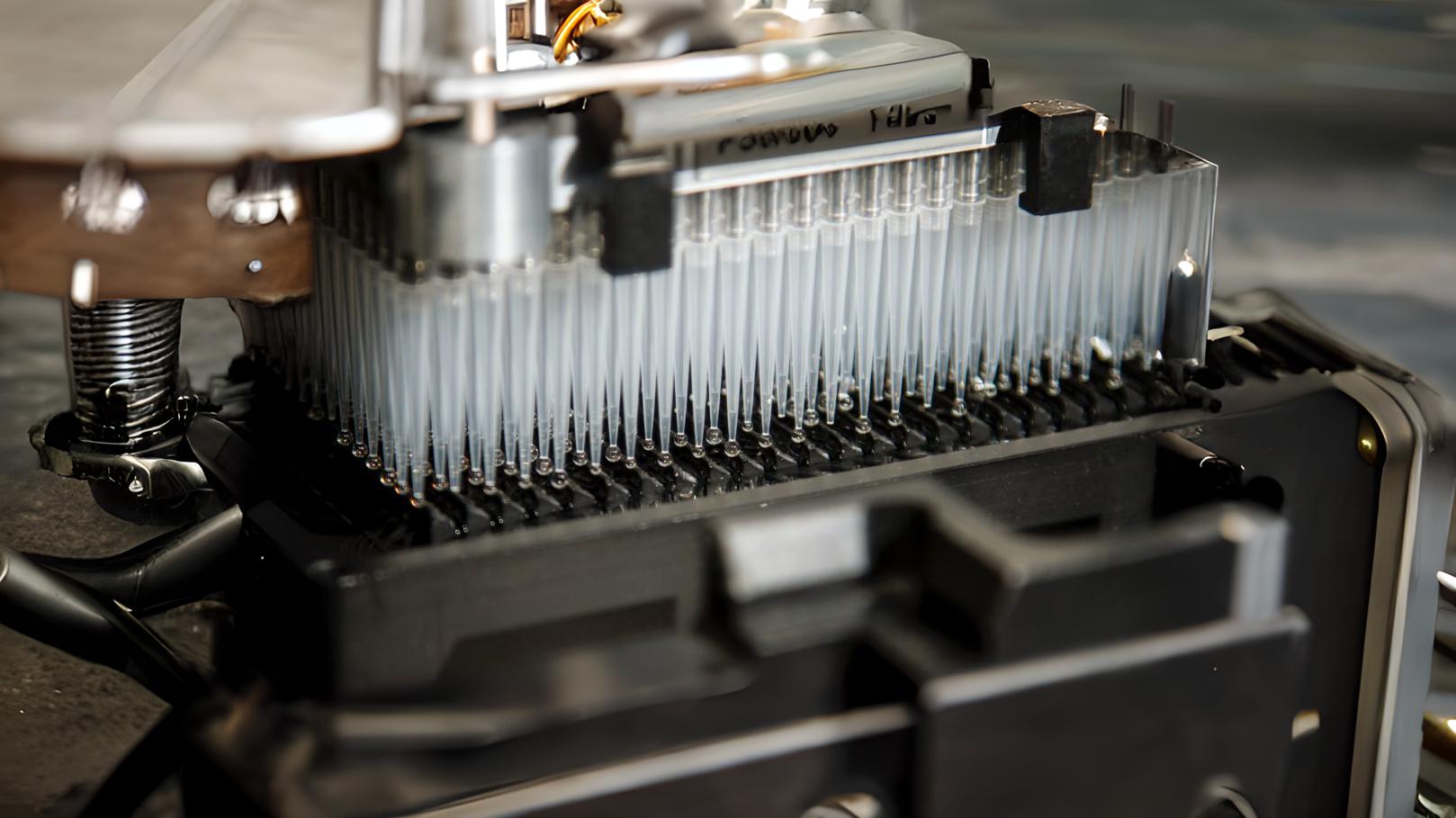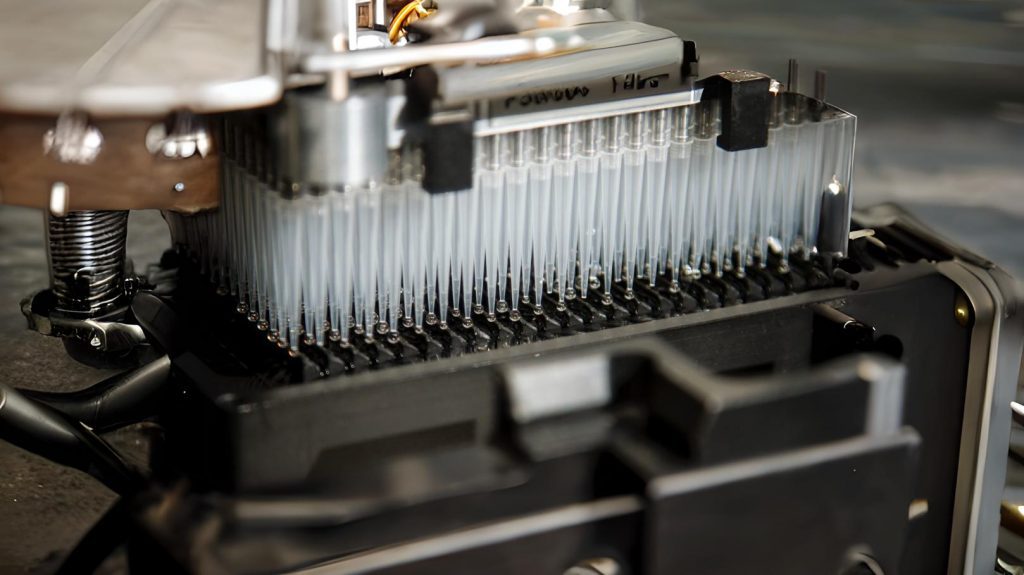-SAVED-Optimising The Manufacturing Process of Drug Development to Meet Demand
 3 years ago
By Charlotte Di Salvo
3 years ago
By Charlotte Di Salvo

Over the last decade, biopharmaceutical manufacturing has needed to evolve rapidly to keep up with clinical demand for products. Innovations in recent years have seen production increase output quantities in a shorter period of time. Adaptations to production including single-use equipment and 3D printing offer significant advantages over traditional pharmaceutical practices, saving time and money over a longer period of time.
For daily articles on the latest pharma trends and innovations, as well as interviews with leading experts and in-depth industry White Papers, subscribe to PharmaFeatures.com.
The rise in demand for biopharmaceutical drugs continues to increase with a growing number of diagnoses of chronic conditions globally, according to a pharma article. This has been suggested to be partially due to the aging populations in North America and Europe. Current methods and latest advancements in drug development aim to accelerate the process of pharmaceutical manufacturing and approval for the market in order to meet this growing demand.
Single-use equipment
Single-use equipment is transforming the biopharmaceutical sector. Examples of single-use equipment include chromatography devices, bioreactors and ion exchange membranes. According to a 2018 article, the leading driving force for single-use technologies is cost reduction. Stainless steel equipment can be expensive for pharmaceutical companies to maintain and ensure they remain sterile. A number of factors contribute to the financial burden of sterility assurance, including high quality operating cleanrooms, barrier technology and well-trained staff.
Single-use equipment can reduce these costs by eliminating the need for in-house sterilisation. Although the initial cost of single-use equipment may be high, the benefits of a faster turnaround allows production to move faster and continuously. This allows pharma companies to invest time and money “to build capacity at a later stage in the clinical cycle when they are more certain their product will reach the market” as described in the aforementioned 2018 article.
Single-use equipment is also advantageous in reducing the chance of cross-contamination. This is a particular risk that can arise through the recycling of equipment when chemical residues are not adequately removed.
One of the issues with single-use equipment is validation of the risk for residual impurities. Due to the infancy of single-use equipment, it is important to assess the possibility of leachables or insoluble visible matter that could arise and pose a concern for quality control. This is a point emphasised in an article, which also highlights the limited availability of the technology and potential development costs.
3D printing
According to one publication, 3D printing (3DP) is forecast to be a “highly disruptive technology within the pharmaceutical sector”. In comparison to expensive laboratories and production lines, 3D printing can be performed on a smaller time scale with flexibility for manufacturing.
According to a 2018 review, 3D printing uses a computer-aided design (CAD) to create drugs in a layer-by-layer fabrication of the desired dosage forms. The advancement of 3D printing in pharmaceutical production is based on the ability to create on-demand formulations with the ability to personalise products without the challenge of changing complicated traditional manufacturing processes.
In 2015, the FDA approved the first 3D printed drug known as Spiritam. This is an oral anti-epileptic drug designed with a porous structure to allow fast disintegration. The modified release behaviour, which allows the tablet to be more easily taken, is thanks to the 3D printing which can specifically design the structure of the drug. It has been suggested that the complexity of 3D printed products could “critically control the drug targeting and release kinetics.”
Since 2015, multiple 3D-printed drugs have received FDA approval. In February 2021, Chinese pharmaceutical company Triastek received approval from the FDA and IND (Investigational New Drug) for its first 3D printed drug product, T19. T19 is a drug designed to treat rheumatoid arthritis. In an industry article, it describes how the company manufactured the drug using its Melt Extrusion Deposition (MED) technology. The printing technology uses “digital pharmaceutical dosage form design and automated intelligent manufacturing to enable the construction of tablets with sophisticated shapes and internal geometric structure”. The benefit of this technology is emphasised in the article, supporting the role of 3D printing in providing more predictable and reproducible drug delivery results.
Process Analytical Technology
Process analytical technology (PAT) is defined by the FDA as a mechanism to “design, analyze, and control pharmaceutical manufacturing processes through the measurement of critical process parameters that affect critical quality attributes of an active pharmaceutical ingredient (API).”.
PAT plays an important part in the consistent production of high-quality products by implementing quality by design (QbD). This is facilitated by ongoing monitoring and control of critical operations. In a 2021 publication, it has been highlighted that some of the popular PAT tools in the pharma industry include near-infrared spectroscopy, Raman spectroscopy, An example of these methods is in a 2021 study, which used “near Infrared Spectroscopy as a PAT tool for monitoring and control of protein and excipient concentration in ultrafiltration of highly concentrated antibody formulations”.
PAT plays an important part of the manufacturing process for monoclonal antibody drug products. In the study it emphasises how the excipient concentrations are critical in the quality attributes, safety and efficacy of such products. Excipients are inactive substances serving as a vehicle for another.
In terms of general biomanufacturing, PAT “allows pharmaceutical producers to evolve from a batch production process to a continuous one”. Continuous manufacturing is becoming more and more popular across the industry for a number of reasons. In an article by the FDA, batch processing is described as a lengthy process which can add weeks/months to processing with “hold-time” between batches.
Another concern is the risk of active ingredients degrading due to sensitivity to the environment. In continuous manufacturing, “material is fed through an assembly line of fully integrated components. This method saves time, reduces the likelihood for human error, and can respond more nimbly to market changes”. On the other hand, continuous manufacturing allows for more frequent quality control checks in addition to flexible tracking and traceability, which is important should product failure arise.
Despite the challenges with each of these manufacturing innovations, each show promises to optimise pharmaceutical production. With further validation of single-use equipment in practice, and adoption of 3D technology across the industry, drug manufacturing processes will continue to be refined to deliver products faster, and in larger quantities for those who need it most.
Charlotte Di Salvo, Junior Medical Writer
Proventa International

Navigating the Complex World of Global Regulatory Affairs in Oncology
In today's fast-paced global pharmaceutical landscape, the regulatory affairs sector plays a pivotal role in ensuring the safety, efficacy, and market access of oncology drugs. As the demand for innovative cancer therapies continues to grow, understanding the intricacies of global...
8 months agoNavigating the Complex World of Global Regulatory Affairs in Oncology
In today's fast-paced global pharmaceutical landscape, the regulatory affairs sector plays a pivotal role in ensuring the safety, efficacy, and market access of oncology drugs. As the demand for innovative cancer therapies continues to grow, understanding the intricacies of global...
8 months ago
Overcoming the Hurdles: Navigating the Challenges in Oncology Clinical Trials
In the world of medical research, oncology clinical trials are at the forefront of innovation and discovery. These trials play a crucial role in advancing our understanding of cancer and developing more effective treatments. However, the path to successful oncology...
8 months agoOvercoming the Hurdles: Navigating the Challenges in Oncology Clinical Trials
In the world of medical research, oncology clinical trials are at the forefront of innovation and discovery. These trials play a crucial role in advancing our understanding of cancer and developing more effective treatments. However, the path to successful oncology...
8 months ago
Embracing a Patient-Centric Approach in Oncology Trials
In the realm of healthcare and medical research, the term "patient-centric" has gained significant traction in recent years. This shift in focus towards prioritizing patients' needs and preferences is not only transforming the healthcare industry but is also making waves...
8 months agoEmbracing a Patient-Centric Approach in Oncology Trials
In the realm of healthcare and medical research, the term "patient-centric" has gained significant traction in recent years. This shift in focus towards prioritizing patients' needs and preferences is not only transforming the healthcare industry but is also making waves...
8 months ago